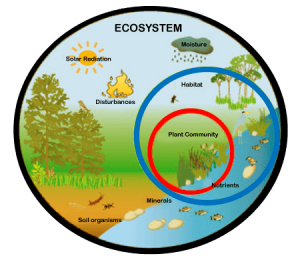Contents
An ecosystem is a geographic area where plants, animals, and other organisms, as well as weather and landscape, work together to form a bubble of life. Ecosystems contain biotic or living, parts, as well as abiotic factors, or nonliving parts. Biotic factors include plants, animals, and other organisms.

Examples of land-based ecosystems are forest, grassland, tundra, and desert ecosystems. A forest ecosystem is one that consists of various plants, particularly trees. Because of the abundance of plants that serve as producers, this ecosystem abounds in life.
The most obvious reason for conservation is to protect wildlife and promote biodiversity. Protecting wildlife and preserving it for future generations also means that the animals we love don’t become a distant memory. And we can maintain a healthy and functional ecosystem.
Ecosystems are controlled by external and internal factors. External factors such as climate, parent material which forms the soil and topography, control the overall structure of an ecosystem but are not themselves influenced by the ecosystem. Internal factors are controlled, for example, by decomposition, root competition, shading, disturbance, succession, and the types of species present.
Ecosystems provide a variety of goods and services upon which people depend. Ecosystem goods include the “tangible, material products” of ecosystem processes such as water, food, fuel, construction material, and medicinal plants.
Ecosystem services, on the other hand, are generally “improvements in the condition or location of things of value”. These include things like the maintenance of hydrological cycles, cleaning air and water, the maintenance of oxygen in the atmosphere, crop pollination and even things like beauty, inspiration and opportunities for research.
Many ecosystems become degraded through human impacts, such as soil loss, air and water pollution, habitat fragmentation, water diversion, fire suppression, and introduced species and invasive species. These threats can lead to abrupt transformation of the ecosystem or to gradual disruption of biotic processes and degradation of abiotic conditions of the ecosystem.
Once the original ecosystem has lost its defining features, it is considered “collapsed”. Ecosystem restoration is thought to contribute to all 17 Sustainable Development Goals.
Contact Us
Head of Department
Department of Ecosystems and Conservation,
PO Box 3010, Chuo Kikuu, Morogoro, Tanzania
